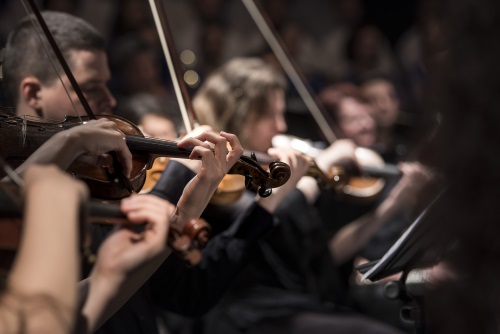What makes acoustic sound sound acoustic? I got to thinking about this once when I attended a performance of Wozzek by Alban Berg at the Santa Fe Opera. Like most top opera companies in the world, the SFO mounts most of their performances 100 percent acoustically.
The exceptions are when the composer calls for effects on the vocals, or for one of the orchestral instruments to be highlighted with reinforcement.
Even in those rare cases, the goal remains to present the performance as an acoustic event. Wozzek does not involve any effects, and was presented without any reinforcement. Once again, I was struck by the differences in this kind of sound when compared to when reinforcement or amplification is used.
Dynamics & Frequency Response
Anyone who has heard a direct comparison between a live microphone feed and a recording of the same source played over a high-resolution system can tell you that there’s a difference.
Part of the reason is that the recorded signal faces restricted dynamic and frequency range. While today’s super-high quality recording systems, particularly those with 24 bit (or greater) resolution, can serve to minimize these restrictions, this is still “something” missing from recorded playback.
I was at an interesting demonstration many years ago, involving a pair of Sennheiser MKH800 microphones (with an upper end response out to 50 kHz), as well as True Systems microphone preamps, Bryston amplifiers and PMC loudspeakers. A performer played acoustic guitar and sang, joined by a piano player.
The setup was carefully done so that we in the audience would be able to compare a live mic feed with 16 bit/44.1 kHz and 24 bit/96 kHz A/D and D/A digital conversion, with no recording taking place.
Speaking for just about everyone who was there, we could hear the difference between all three modes of transmission. The live mic feed sounded, well, live. The two digital conversion formats sounded different than the live mic feed – and different than each other – with (of course) the higher bit rate/sample rate version sounding closer to the live mic feed, but not exactly the same.
Loudspeakers In The Mix (Or Not)
Back to the opera. Here are the specific things I noticed about the sound.
First, especially with the singers, there was no bass. Sure, there were bass notes from the bass and baritone singers, but there was only what was coming from these performers’ mouths and bodies.
It really struck me that there is something very artificial about having a lot of low frequency content coming from a voice. There is a combination of (usually) some proximity effect at the microphone, and then EQ in the system.
Even if the voices aren’t going through the subwoofers (and they usually aren’t), there is much more bass in the vocals coming out of the loudspeakers than was originally in the voice itself.





















